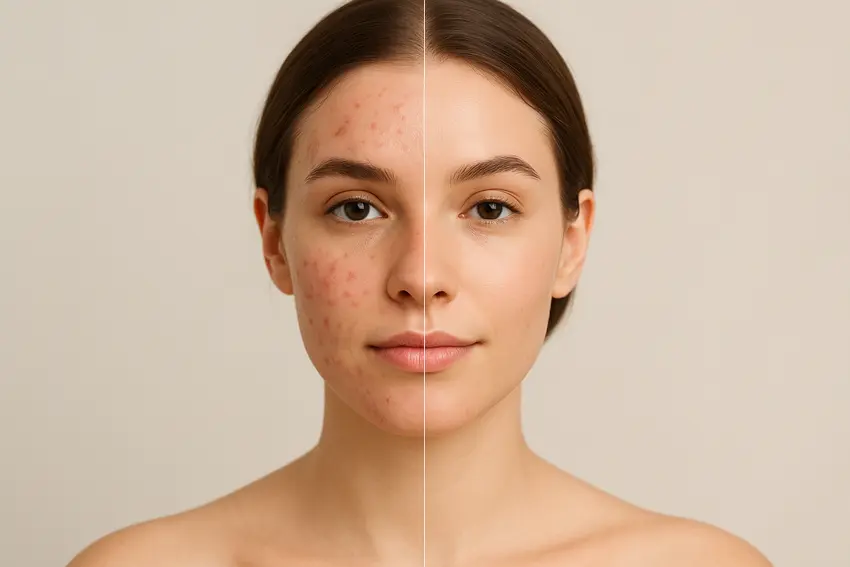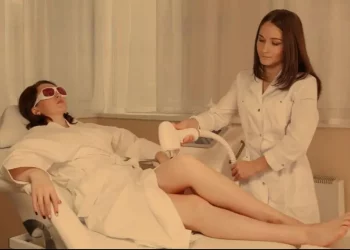What Are Acne Scars
Acne scars are permanent changes in skin texture that occur when inflammation damages the deeper layers of skin during the healing process. They appear as depressions, raised areas, or changes in skin color that persist long after the original blemish has healed.
Keep in mind that scars form when the body produces too little or too much collagen during the healing process, creating visible textural changes that don’t fade on their own.
What Are Active Breakouts
Active breakouts are current inflammatory or non-inflammatory acne lesions including whiteheads, blackheads, papules, pustules, or cysts. These are temporary skin conditions that can heal completely with proper treatment.
Take note that active breakouts are ongoing skin issues that require immediate attention to prevent them from progressing into permanent scarring.
How To Tell The Difference At A Glance
Texture: Scars create permanent indentations, raised areas, or textural changes. Active breakouts are temporary bumps or lesions that will eventually heal.
Color: Scars may appear darker or lighter than surrounding skin permanently. Active breakouts show temporary redness or inflammation.
Response to treatment: Scars require professional intervention and don’t respond to typical acne treatments. Active breakouts improve with appropriate skincare and topical treatments.
Duration: Scars persist indefinitely without treatment. Active breakouts resolve within days to weeks with proper care.
“Many patients feel discouraged when they confuse post-inflammatory hyperpigmentation with true scarring,” explains Dr. Shamsa Kanwal, M.D., consultant dermatologist and expert contributor to MyHSTeam. “Understanding this distinction is vital because dark spots from acne can fade with consistent treatment and sun protection, while actual textural scars require professional procedures like microneedling, chemical peels, or laser treatments.”
Types of Acne Scars
Ice pick scars: Deep, narrow depressions that extend into the dermis, resembling small puncture wounds.
Rolling scars: Broad depressions with sloping edges that create a wave-like appearance on the skin surface.
Boxcar scars: Broad depressions with sharply defined edges, similar to chickenpox scars.
Hypertrophic scars: Raised, thickened areas of tissue that form when too much collagen is produced during healing.
Furthermore, post-inflammatory hyperpigmentation (PIH) creates dark spots but isn’t true scarring since it only affects pigmentation, not texture.
Prevention Strategies
Treat breakouts early: Address acne promptly with appropriate treatments to minimize inflammation and prevent scarring.
Avoid picking and squeezing: Manipulating lesions increases inflammation and significantly raises the risk of permanent scarring.
Use gentle products: Harsh scrubs and aggressive treatments can worsen inflammation and increase scarring risk.
Apply sunscreen daily: UV exposure can darken post-inflammatory marks and delay healing, making scars more noticeable.
Also, maintaining a consistent skincare routine that supports the skin barrier helps prevent severe inflammation that leads to scarring.
Treatment Approaches for Active Breakouts
Gentle cleansing: Use a mild, sulfate-free cleanser twice daily to remove excess oil and debris without irritation.
Topical treatments: Apply products containing salicylic acid or benzoyl peroxide as directed. Retinoids should only be used under professional guidance, especially if pregnant or breastfeeding.
Spot treatments: Use targeted products on individual blemishes to reduce inflammation and speed healing.
Moisturizing: Maintain skin hydration with non-comedogenic moisturizers to support the healing process.
Plus, avoid layering multiple active ingredients simultaneously, which can increase irritation and potentially worsen scarring risk.
Professional Scar Treatment Options (must only be performed by licensed dermatologists in clinical settings; results vary and multiple sessions may be required)
Microneedling: A dermatologist may use this procedure to create controlled micro-injuries that stimulate collagen production and improve scar texture. This should only be done in a licensed clinical setting.
Chemical peels: Dermatologists may perform these treatments to remove damaged skin layers and promote cellular turnover to reduce scar appearance. These are not suitable for everyone and must be medically supervised.
Laser treatments: Performed in a clinical setting by licensed dermatologists, lasers target scar tissue with precise energy to stimulate remodeling and improve texture. Outcomes vary and multiple sessions are often required.
Dermal fillers: Licensed dermatologists may use fillers to temporarily reduce the appearance of depressed scars. Results vary and require periodic maintenance.
Subcision: A minor surgical technique performed by dermatologists to release fibrous bands under rolling scars and improve contour. This procedure carries risks and should only be considered under medical supervision.
Take note that combination treatments often provide the best results, and multiple sessions are typically required for significant improvement.
At-Home Scar Management
Consistent skincare: Maintain a gentle routine with ingredients that support skin renewal and collagen production.
Vitamin C serums: Apply antioxidant serums to brighten post-inflammatory marks and support healing.
Retinoid products: Retinoids may help promote cellular turnover and gradual improvement in skin texture, but they should only be used with professional guidance and are not suitable for everyone.
Hydration: Keep skin well-moisturized to support the natural healing process and maintain barrier function.
Sun protection: Apply broad-spectrum SPF 50 daily to prevent darkening of scars and post-inflammatory marks.
What To Avoid
Never pick, squeeze, or manipulate active breakouts or healing lesions, as this dramatically increases scarring risk.
Avoid harsh scrubs, aggressive brushes, or abrasive treatments that can worsen inflammation and damage healing tissue.
Don’t use multiple strong active ingredients simultaneously without professional guidance, as this can increase irritation.
Furthermore, avoid unprotected sun exposure, which can darken scars and delay the healing process.
When To See A Dermatologist
If you notice textural changes or depressions that persist after acne lesions heal, professional evaluation is recommended.
If you have severe or cystic acne, or if your breakouts are not responding to over-the-counter treatments, consult a licensed dermatologist for evaluation and care.
Consider professional consultation if post-inflammatory marks aren’t fading after several months of consistent treatment.
Also, if you’re experiencing frequent breakouts that consistently lead to dark spots or textural changes, early intervention can prevent permanent scarring.
Realistic Expectations
For active breakouts: Most lesions heal completely within 2-6 weeks with appropriate treatment and no manipulation.
For post-inflammatory marks: Dark spots typically fade within 3-12 months with consistent treatment and sun protection.
For true scars: Significant improvement requires professional treatment, and while scars can be minimized, complete elimination isn’t always possible.
Keep in mind that patience and consistency are essential for both preventing and treating acne-related skin concerns.
The Bottom Line
Active breakouts are temporary and treatable with appropriate skincare. Scars are permanent textural changes that require professional intervention for improvement.
Focus on prevention by treating breakouts gently and promptly, avoiding picking, and maintaining consistent sun protection. For existing scars, consult a dermatologist to develop an appropriate treatment plan that may include professional procedures combined with supportive at-home care.
Take note that understanding the difference between these conditions helps you choose the right treatment approach and set realistic expectations for improvement.
Disclaimer
This article provides general educational information about acne, breakouts, and acne scars. It is not medical advice, diagnosis, or treatment. We are not doctors, dermatologists, or licensed medical advisors.
If you have severe, cystic, or persistent acne, consult a licensed dermatologist or healthcare provider. Any mention of treatments, skincare actives (such as salicylic acid, benzoyl peroxide, or retinoids), or professional procedures (such as microneedling, chemical peels, laser, fillers, or subcision) is for general awareness only and must not be taken as a recommendation or endorsement. Retinoids and certain treatments should only be used under professional supervision and are not suitable for everyone.
Professional treatments must only be carried out by licensed dermatologists in a clinical setting. Results vary, and no outcomes are guaranteed.
Any reference to doctors, clinics, or expert contributors (including Dr. Shamsa Kanwal, M.D., consultant dermatologist and expert contributor to MyHSTeam) is for educational purposes only. Such mentions are not endorsements, advertisements, or commercial promotions, and readers should not interpret them as personal medical advice.
All images are illustrative references only and do not represent actual patients, clinics, or results. External links, if provided, are for informational reference only and do not imply endorsement.
By reading or acting on this content, you agree that all health-related decisions are your sole responsibility. WellHealthOrganic.com and the authors disclaim all liability for any harm, loss, or consequences arising from reliance on this content. If you have a medical emergency or severe skin reaction, seek immediate medical care.

















